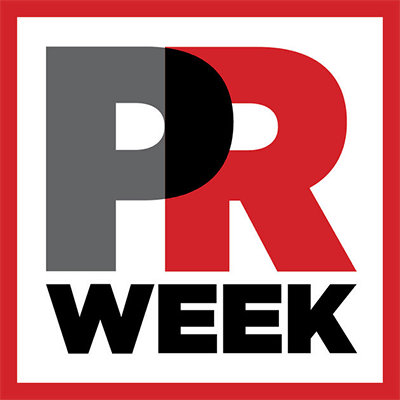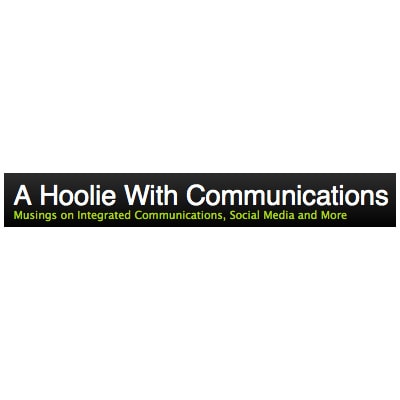Also see Marian’s blog posts on the Huffington Post.

“Getting Madder, Emotional Worth and Toughening Up at Bootcamp: The Top Ten Trends We’ll Be Talking (and Tweeting) About in 2011,”
The Daily Mail, Dec. 31, 2010
On the final day of 2010, this British newspaper looks ahead to the new year with commentary on and excerpts from 10 trends in Marian Salzman’s main trends report. It also runs her “Hot/Not” list and five of the food trends she’s forecasting for 2011. Of her “Booting Up” trend, the newspaper says this: “Bootcamps are a favourite with celebrities for getting fit quickly, but now they are set to become a more widely-used tool for both parents and corporate organisations to toughen up children and employees for the rigours of the 21st century.”

“Pie’s Ascendancy Among Food Trends,”
The Philadelphia Inquirer, Dec. 30, 2010
Marian is one of the people named in this article as predicting that pies will be next year’s hot dessert—perhaps even surpassing cupcakes. She also predicts her rise of the sweet potato and relates her macro trend of people wanting more control in 2011 to food: “People feel a lack of control in their lives, and the extreme manifestation of that desire for control is growing your own food—being an urban farmer.”
“The Dish: Plenty of Visionaries in Our Local Food Scene,”
Wilmington StarNews, Dec. 30, 2010
Sustainable seafood, locally crafted beer and mom-and-pop establishments are just some of the food trends on the horizon for 2011. Good Vibes Brewing in Wilmington, N.C., says the writer, is right on trend with next year’s rise of the mom-and-pop business, as extrapolated from Marian’s annual trends report, which says small business will be on the rise for a newly unemployed class and reinvention will become the new normal.

“Fashion Leading the Way Back to the Future,”
MSNBC.com, Dec. 29, 2010
The Associated Press asks the opinion of Marian, president of Euro RSCG Worldwide PR and trendspotter, in this story about how “[t]rend watchers find many sociological parallels between the ’70s and the current climate.” Marian says people want more of a “quiet rebellion” in fashion and style than a revolt, which the writer says could appear in the form of half-groomed beards or “mashups of seemingly clashing colours.”

“The Year of the Split: How Heartbreak Went Viral in 2010,”
The Independent, Dec. 29, 2010
Why were celebrity divorces and separations different in 2010 than previous years? The rise of social media—over which some celebrities themselves even made the announcement that they were splitsville—made nothing private. “The velvet rope has been replaced by a faux intimacy that allows us all to climb in for a quiet natter,” says Marian in the article. She also discusses the “car crash split of the year for me”—Al and Tipper Gore—plus Courteney Cox, and the effect of good news announced on SoMe too, such as the engagement of Prince William and Kate Middleton.

“Fashion Leading the Way Back to the Future,”
Newsday, Dec. 29, 2010
In another high-profile pickup of this article from the Associated Press, Marian also talked young people and money. Today’s college graduates mirror those in the 1970s, who, she says, expressed frustration that “despite fulfilling their part of the bargain to go to college, became educated and fairly responsible, riches weren’t theirs for the taking.” Another cultural similarity she points out is that people are staying close to home and spending more time with family.

“Fashion Leading the Way Back to the Future,”
ABC News/Health, Dec. 29, 2010
This clip is a third major pickup of the AP article about fashion and lifestyle trends in 2011, specifically those with echoes of the 1970s. Marian is one person who discusses the sociological explanations for the reasons our culture is looking back to the Me Decade and how those are manifested in everything from beards and lip stain to wide-leg trousers and peasant tops—and even avocado green in the kitchen.

“The Hottest Fashion Trends of 2011 from a Top Trendspotter,”
FitandFabLiving, December 2010
This fashion and lifestyle blog features five of Marian’s fashion trends for 2011—designer comebacks, the continuing rise of eco fashion, the return of 1970s style and military fashion, and the latest rage: combining high-low design in one outfit. Of the first, she says, “Will [Tom] Ford’s triumphant return pave the runway for other comebacks of those who might have stepped away from the design table?”

“Trendspotter Marian Salzman’s Fashion and Beauty Predictions for 2011,”
FitandFabLiving, December 2010
This fashion and lifestyle blog features five of Marian’s fashion trends for 2011—designer comebacks, the continuing rise of eco fashion, the return of 1970s style and military fashion, and the latest rage: combining high-low design in one outfit. Of the first, she says, “Will [Tom] Ford’s triumphant return pave the runway for other comebacks of those who might have stepped away from the design table?”

“Why We’ll Be Paying Lip Service to Pies and Celebrating the Fact That 60 Is Sexy,”
Yorkshire Post, Dec. 28, 2010
In this bylined piece, Marian covers trends she’s predicting for 2011 in the following categories: fashion, beauty, food, restaurants, technology, work, religion, the gender divide, exercise and relationships. For the latter category, she says, “The baby boomers may be entering their twilight years, but they are increasingly behaving like lovestruck teenagers.” What that means: more boomers leaving long marriages and many people over 60 reconnecting with old flames.
“Top Trends for the Cash-Rich, Time Poor in 2011,”
The Docklands 24,, Dec. 28, 2010
This newspaper for people in the Docklands in London (which includes the major business district of Canary Wharf) wonders what awaits the area’s “cash-rich, time poor” residents in 2011. It lists five of Marian’s business and consumer trends for next year as examples: fewer people flying, a rise in risk-calculation programs, reunion dating, luxury brands going culturally relevant and more people defriending their SoMe networks.

“Top Trends for the Cash-Rich, Time Poor in 2011,”
Media Daily, Dec. 27, 2010
As a counterpoint to information overload, bad news and fears about what the future holds, people will be engaging in behaviors that soothe anxiety—“think vacations that have a wellness or spiritual element to them, a deeper need to spend time with family and a craving for balance,” says Marian in this bylined commentary. She discusses other safety- and anxiety-related trends for the coming year, too, including cyberbullying and the “antisocial social class.”

“Anger’ Listed Among Trends,”
Stamford Advocate, Dec. 27, 2010
Marian gives her hometown paper, the Stamford Advocate, a few reasons why anger will increase next year—the trend that leads her forecast for 2011. Among them: men angry that they’re out of work, women angry that they’re the primary breadwinner and everyone angry about partisan politics. “We haven’t been more polarized as a country since the Civil War,” she says. The article also touches on many of the other 11 trends in Marian’s annual report.

“11 Trends for 2011,”
CNN.com, Dec. 26, 2010
In this bylined piece, Marian describes her annual holiday tradition: Creating her trends forecast for the following year. “While other people browse through malls, I sift through movements, mindsets and moods to come up with a rundown of what will be trending in the next 12 months,” she says. Her 11 trends for 2011 run the gamut from anger to emotional-resilience boot camps to gender roles in U.S. society.

“Euro RSCG’s Salzman Makes Her 2011 Predictions,”
PRNewser, Dec. 22, 2010
What’s hot and what’s not for 2011? PRNewser runs Marian’s “Hot 100” list and calls out some of its favorites: On the hot list: Sunday news programs, kitten heels, niche gyms, Mariah Carey’s unborn children and Fort Greene, Brooklyn. And from her “Nots” list? Russian spies, harem pants, sending e-cards, LeBron James and Las Vegas.

“Veteran Visionary’s Annual Forecast: Trendspotter Extraordinaire Salzman Discusses Her Outlook for 2011,”
Bulldog Reporter’s Daily ’Dog, Dec. 17, 2010
In this bylined piece, Marian first looks back at some forecasts from among her almost two decades of noting what’s ahead for the coming year. Then she goes in-depth when discussing her 11 trends for 2011, and she gives quick looks at what’s next in two dozen additional areas—everything from the legal pot trade to wind power to “reunion dating.”
“Gingerbread Lessons and Desserts at Brown’s,”
Lexinagton Herald-Leader, Dec. 16, 2010
What’s on our plate for 2011? The Herald-Leader highlights five of Marian’s food trends for next year, including: pies (goodbye, cupcakes!), restaurants whose menus revolve around one food, “meatless Mondays,” growing vegetarianism across the United States and a movement toward smaller portions.

“New Fitness Trends: Time to Put Your Bare Foot Forward in 2011,”
Metro, Dec. 12, 2010
What will be new in fitness next year? This daily U.K. paper checks in with a few fitness experts, plus Marian, president of Euro RSCG Worldwide PR, North America. According to the others, we’ll see more barefoot running, iPhone training apps, TRX workouts and short, intensive workouts. The crux of Marian’s forecast? “There’ll be a rise in blended exercise, mixing up two things such as piloxing (pilates meets boxing).”

“Les 11 Tendances 2011 de Marian Salzman,”
INfluencia, Dec. 12, 2010
The woman who popularized metrosexuals and übersexuals debuts her top trends for 2011. This French article lists Marian’s 11 trends forecasts for next year, from “Mad as Hell—and Only Getting Madder” to “Tapping Minitrends” and everything in between.

“What’s Your Brand’s Story?“
PRWeek, Dec. 10, 2010*
Consumers are distrustful and disenfranchised, so brands need to “tell their stories collaboratively—with their audience actively engaged in the unfolding narrative,” says Marian in this op-ed. Companies doing this well include Threadless, Mountain Dew and Chiquita, which have included customers in design competitions. They’re also supporting causes, such as Kenneth Cole and Gap. And they’re weaving in a great story to their marketing efforts, as Jay-Z has. “As we look for ways to trust brands again in the wake of BP and Merrill Lynch,” says Salzman, “perhaps it’s time for brands to have a chat with their innermost voices—or their closest consumers—and proudly exclaim who they are, and more importantly, what they stand for.”

“Charting the Industry: Female Millennials: $$ Not the Big Prize,”
PR News, Dec. 6, 2010*
In a new report based on a survey of 3,000 young adults in five countries, “Gender Shift: Are Women the New Men?” Euro RSCG Worldwide found that for a majority of women and a plurality of men in each of the markets (China, France, India, the United Kingdom and the U.S.), happiness means love. “This is an important shift from a time when money and power were the coveted prizes at the end of the rat race,” says Marian Salzman, president of Euro RSCG Worldwide PR, in this article. “It’s clear that the gender wars of the past are no more and that millennials view gender in a totally different way than their parents’ generation did. This has a massive effect on global business and, especially, on communicators.”

“Salzman: How Will You React to the Changes?“
CNBC.com, Dec. 6, 2010
“When Barack Obama ushered in an era of folks thinking about change, the sentiment was one of hope, of expectation that somehow, because of change, the future would be aglow with hundreds of watts of positive light,” starts this op-ed by Marian. “But maybe we didn’t read the fine print: With all change comes a great deal of growing pains.” Today, to survive and thrive, reinventing yourself and doing something that pleases you are key to adapting to an uncertain world. That might mean leaving it all behind, or it might mean using some latent skills. Personal change is a universal awakening that we’ll see grow around the globe.
“Looking Ahead: The Big Trends of 2011,”
Media Life, Dec. 3, 2010
In a Q&A on the Media Life website, Marian, trendspotter and president of Euro RSCG Worldwide PR, North America, talks about how she identifies trends, which ones from 2010 panned out and why trendspotting is important. No doubt it’s always changing. To the question “What are the challenges in forecasting trends in a new year?” she answers: “The geopolitical situation is wildly turbulent. Think about WikiLeaks and the pressures between the Koreas. They are breaking news that may reshape some minds and mood. WikiLeaks has me obsessing on infoglut [information overload]. We are drowning in the findings. Enough is too much.”

“Marian Salzman of Euro RSCG Worldwide PR Releases List of Top Trends for 2011,”
Trends Updates, Dec. 3, 2010
This trend-focused website outlines some highlights of Marian Salzman’s latest annual trends report, from “a gradual shift to a simpler life” to change, which the site says will “not be a slogan but become a way of life.” Also: “Broadcast news will continue losing its importance to interactive content. Boot camps will make a comeback to toughen up kids for the 21st century. Men will no more be the masters of all they survey.”

“Predictions: America’s Frustrated Middle Class,”
The Economist, Dec. 2, 2010
The blog that accompanies The Economist’s The World in 2011 predictions calls out one of Marian’s forecasts for next year, Mad as Hell—and Only Getting Madder. (In a nutshell, that trend says that 2010 upped the ante for making Americans angry and that today’s 24/7 news and blogosphere amplify the hottest people and topics, which continues to add fuel to the fire.) In introducing the full text of that trend, the blog writer says, “Interestingly what she foresees coincides with the opinions of Arianna Huffington, who reckons the United States risks becoming ‘a third-world nation.’ ”

“Euro RSCG Worldwide PR Issues Trends Forecast for 2011,“
Bulldog Reporter‘s Daily ‘Dog, Dec. 1, 2010
“Companies making money on the Internet, the graying of issues important to baby boomers, and the ideas that we now know as corporate social responsibility, the iPad and Facebook, among many others”—they’re all trends that Marian has forecast in her annual list for the upcoming year. For 2011, she predicts hyperpolarization and anger will continue to grow, plus 10 other trends and two dozen “Future Bytes”—quick hits about what to expect in everything from luxury brands and parenting to travel, science and alternative energy.
“Mystic Marian,”
Voyager, Dec. 1, 2010
Marian is one of the world’s top trendspotters—which doesn’t mean reading palms, tea leaves or tarot cards. She has built a life and a career around seeking information, creating buzzwords, and distilling observations and taking them mainstream, all of which has led to the release of her annual trends forecast for the past two decades. Once dubbed “Mystic Meg of the business world” by the British tabloids, says the writer of this profile in BMI Airway’s in-flight magazine, Marian has always led a busy, enthusiastic life, which has informed her trendspotting (the writer calls that “part study, part intuition”). What’s next? Marian sees people wanting to unplug, leading to more resorts offering media-free destinations.

“Salzman: Mining Social Trends (or Previewing 2011),”
CNBC.com, Nov. 30, 2010
“It’s a fact: Human behavior models cultural trends.” That’s how Marian starts this wrap-up of her trends forecast for 2011. With insight into society’s zeitgeist, she says, brands will be able to best position themselves for the future. Among the trends she predicts for the coming year are a continued rise in anger, meaningful hands-on work, individuals as newsmakers, new ways to measure success, and lots of change and reinvention.

“Euro RSCG’s Marian Salzman: 11 Trends for 2011,”
Radio and Television Business Report, Nov. 30, 2010
Things move quickly in the mobile, social media and online spaces. Marian’s annual trends list lets people in the broadcasting and advertising industries plan ahead. Her list includes the following trend, which might be of interest to people in those sectors (social media is a key driver in much of what is happening today and in the future, so this is a tweet-version summary): Public Mycasting System. Broadcast news: dead. Mycasting emerges. People curate interactive content, expressing their worldview in images, shared links, tweets.

“Euro RSCG’s Marian Salzman: 11 Trends for 2011,”
451 Marketing Heat, Nov. 19, 2010
Marian makes 451 Marketing’s list of top social media strategists to watch. Says this new-media communications firm: “[O]ur industry is still attracting and cultivating some of the smartest, most talented, and ambitious individuals around. This list consists of the people who the 451 team feel are setting the bar high.”
“GroupTour Magazine Covers VolunTourism: ‘101 Style,”
VolunTourism, Oct. 30, 2010
The VolunTourism blog cites a post written by Marian and Ann O’Reilly that gives insights into research from Euro RSCG Worldwide’s “The New Consumer” report. Among their thoughts: “Categories reflecting a move away from the superficial include food (as seen in the evolution of ‘conscious nourishment,’ such as organics, artisanry, buying local, and ‘slow food’) and travel (a category marked by increases in eco-consciousness, cultural immersion and voluntourism).” Remarks the blogger: “Truth be told, I think we really wanted products and services like voluntourism all along, but brave indeed is the company that creates a product or service and takes it to market without fully knowing how it will be received, if at all.”
“Opportunity Calls,”
The University Daily Kansan, Oct. 7, 2010
There are many keys to getting the most out of an internship, from asking people for more work to making a good impression, including appearance, professionalism and doing homework. And don’t bring a negative attitude. Marian has worked with many interns—and done much research about people in the 18-to-25 age group—and says young people today have a variety of working and personal styles. “My own impression,” she says in the article, “is there is a huge range from massively productive co-creators to insanely hard-to-manage narcissists.” Adds the writer: “A bad attitude will land you in the latter category and make you stand out in a negative way.”

“Consumer Finance: Top 10 Places to (Fill in the Blank),”
The Wall Street Journal, Oct. 5, 2010
Why are best-and-worst city lists so intriguing? And why are they seemingly everywhere today, covering any type of ranking imaginable (“most haunted” and “most bedbug-infested,” for instance)? Marian gives a Dow Jones writer a few reasons. Among them: “People crave to know who is the top and who is the bottom. We don’t care about what is happening in the middle…we’re interested in the fringe.” Plus, she said, “There’s a proliferation of new media outlets, so there is a crying need for more content.”

“Wyclef Jean Hospitalized, Suffering from ‘Stress and Fatigue’ After Failed Run for Haiti Presidency,”
Associated Press, Sept. 27, 2010
After Haitian native Wyclef Jean’s whirlwind campaign for president of Haiti ended in mid-September, he checked into a hospital at an undisclosed location. Explained Marian, Jean’s media relations representative: He is “suffering from stress and fatigue based on the grueling eight weeks he’s had.”

“The Tweet Life of CMOs,”
Adweek, Sept. 13, 2010
Chief marketing officers are increasingly entering the world of social media, especially Twitter. How they relate to their followers can affect their business and their brand significantly. Marian offers some insight: “We’ve all had to learn to be copywriters.… it can’t be self-promotional [and has to have] just enough creativity that it doesn’t look like a commercial sponsorship. It’s a very interesting juggling act.”

“The Disney Star Machine,”
Forbes.com, Sept. 8, 2010
The recent opening of Camp Rock Two left writer Meghan Casserly pondering why the house of Disney—which launched the careers of Britney Spears, Christina Aguilera, Miley Cyrus and Demi Lovato, among many others—is such a “girls’ club.” Cyrus, for instance, earned a reported $48 million last year, while all three Jonas brothers together earned $35.5 million. Casserly looked to Marian for answers. Among Marian’s lengthy insights, including those into the high reputational standards the company’s stars are expected to keep, she said this: “The Disney marketing machine seems to work to mobilize young girls towards consumerism—which is a much tougher sell to boys who aren’t as in touch with their ‘shopping selves’ in the tween age group.”

“Reading Between the Sofas: Marian Salzman on the Oval Office’s New Additions,”
PRNewser, Sept. 3, 2010
The PRNewser blog featured Marian’s observations from The New York Times about the Oval Office’s recent makeover. One of her interpretations of the new décor: “It’s a quick, design-y way to say, ‘I’m always thinking about the planet and our future generations, even when I am meeting and greeting heads of state, contemplating legislation, or doing whatever presidents do in their private office spaces.’ ”

“The Audacity of Taupe,”
The New York Times, Sept. 1, 2010
After the Oval Office was redecorated, the “Design Notebook” feature of the Home Section in The New York Times talked to people in the fields of design, politics, psychology, journalism and others to get their reactions. Marian, president of Euro RSCG Worldwide PR, was one of those who added her take. Among her observations: “Not only is his office warmer—think caramel—but it also gives a nod to the environment with the vibrant shades of blue he uses as accent hues.”

“Hurricane Wyclef: PR Lessons from a Presidential Campaign,”
Bulldog Reporter, Aug. 31, 2010
In one brief month, Wyclef Jean exploded onto the global political scene. From the time that news of his intended announcement to run for president of his home country, Haiti, was leaked on the Internet, to the time he was disqualified from running (and then began to pursue an appeal), Euro RSCG Worldwide PR was with him, leading his media and communications strategy. Marian, the agency’s president, says in this opinion piece that she “experienced a phenomenon” that month. “Almost 10.8 billion total media impressions later, spanning six continents, we saw a celebrity transform into a serious contender virtually overnight,” she added. Marian shares four of the lessons she learned while working on this campaign.

“Teen Girls Seek Balance But Still Spend Strong,”
PRWeek Online, Aug. 20, 2010
In this opinion piece in PRWeek’s online edition, Marian, president of Euro RSCG Worldwide PR, offers some details about the agency’s recent survey of hundreds of teen girls nationwide on various trends. Euro RSCG PR also talked to members of its teen initiative called The Sisterhood and to Blair Fowler (aka Juicystar07, the 17-year-old online fashion guru with hundreds of thousands of followers on her YouTube channel) to round out its research. Among the findings: Girls have more money to spend than last year at this time, are eager to return to classes and will buy fewer brand-name back-to-school goods. Plus, what they’re looking for in life now includes their personal-best style and the ever elusive balance.

“Cursing at Work Comes Under Fire,”
MSN, Aug. 2, 2010
Goldman Sachs has banned cursing in e-mails sent by its employees. “But,” as writer Eve Tahmincioglu notes, “completely eliminating cursing on the job may be even harder than eradicating fraud on Wall Street.” She asked Marian for her take. “ ‘I think truck-driving speak has invaded modern language and won’t go away,’ said trend-spotting guru Marian Salzman, who’s been credited with coining the word ‘metrosexual.’ The cyber age, she added, has accelerated this foul-language phenomenon. ‘WTF will be the single most common response.’ ”

“PR Pros Advise BP’s Dudley,”
Advertising Age, July 26, 2010
Robert Dudley is preparing to replace Tony Hayward as CEO of BP, and some public relations executives think that’s a good move. Advertising Age interviewed two, and Marian was one. “Mr. Hayward is symbolic of what is wrong,” said Marian, who also gave some thoughts on BP’s branding on the Huffington Post, “so he needs to be forgotten so that the global community can contemplate forgiving.”

“Retailers Luring Teens with Social Tools,”
eMarketer, July 16, 2010
Marian talked to eMarketer about kids’ shopping habits, behaviors and expectations. She had this advice when asked for the Q&A how retailers should use social media to reach teen consumers: “Talk their talk and walk in their shoes, but don’t overmarket, overpromise or be too in their faces electronically or anywhere else. Realize that reduce and reuse is a green message but also part of teens’ commitment to values. It’s social. It’s not marketing; it’s a conversation, not a lecture.”

“PR Firm Creates Teen Sisterhood,”
Stamford Advocate, June 18, 2010
Two teenage girls from the Stamford, Conn., area are surprised to find themselves intimately connected in their tastes, their perspectives and the ways they approach the world around them. But it’s not Facebook or MySpace that has revealed all this. Rather, Euro RSCG Worldwide PR’s Sisterhood initiative, which was developed to gain an understanding of teen girls as a market demographic, is showing the teens (and the rest of the world) just how closely connected they are. “To put it simply, teenagers are at a new frontier of social culture,” says Marian, the agency’s president. “They’re changing the field of marketing, altering communications, inventing new lexicons and adopting still-embryonic innovations.”

“Tweens Reclaim Their Popular Status in Consumer Outreach,”
PRWeek, June 1, 2010
It’s no secret that young teens represent a powerful market force. The question is how to reach them. Euro RSCG Worldwide PR has taken a brand-new approach, attracting teens to the agency with its Sisterhood initiative, which focuses on connecting with teens on their own terms, in their own environment. “As a marketer, I’m looking to talk to [teens] on rational and emotional levels,” says Marian, president of Euro RSCG Worldwide PR, North America. “We won’t go out and recruit them. They must come in via the kind of reviews and blogs we’re creating.”

“Are You Ruled by Superstition?“
Daily Mail Online, May 24, 2010
We might be living in an übermodern world of advanced ideas and digital connectedness, but the truth is that people are as superstitious as ever. From dodging black cats to chucking salt over their shoulder, people are still practicing irrational superstitious rituals. Expert trendwatcher Marian explains what’s up: “The world is so topsy-turvy, with terrorists trying to strike us down while we head out to dinner, we think we can protect ourselves and our loved ones with new practices that become ‘must-dos’ to keep the truly evil things at bay.”
“Panera’s New ‘Pay-What-You-Want’ Café: Can It Scale?“
Justmeans, May 19, 2010
National bakery chain Panera Bread recently opened a nonprofit shop in St. Louis, where there are no set prices and customers are allowed to pay what they can or volunteer to help at-risk youth if they can’t afford to pay. At first blush, the enterprise seems to show that good intentions can equal good business. This is the first time such a venture has been attempted by a for-profit corporation (the nonprofit shops are managed by the philanthropic arm of the company), so the idea of scaling to a national scope is being considered. Trendspotter Marian Salzman told USA Today that she doesn’t have high hopes for sustained success, but the jury is still out on the potential upsides to this charitable business model.

“Panera Launches First Nonprofit Cafe,”
The Daily Beast, May 18, 2010
Consumers today are demanding not just product value but also social awareness from the businesses they support. One company, Panera Bread, has gone out on a limb to embrace this very notion, offering customers at one branch of the restaurant chain the option to pay what they can for their meal. Marian gives her read on the chances of Panera’s honor system succeeding in the long run.

“Non-Profit Panera Cafe: Take What You Need, Pay What You Can,”
USA Today, May 18, 2010
Panera Bread decided it wanted to test a theory in socially aware business by converting one branch of its restaurant chain into a nonprofit organization where customers can pay whatever amount they can afford. It’s a noble effort, but is it good business? USA Today turned to expert trendwatcher Marian to get a realistic read on the idea. “I don’t think the honor bar system will work nationally,” she says. “While young people are very much attuned to helping out and making a difference, if they find themselves sitting next to other customers with whom they don’t feel comfortable, they’re not coming back.”

“Q&A: Redefining Teens, $216 Billion Buyer Power,”
Marketing Daily, May 11, 2010
Teens wield far more influence than they are given credit for, Marian tells Marketing Daily. She calls them master communicators and says they’ve “stripped out the verbosity” in their language. Marian also says the recession has made them worried about earning a living and paying back college loans when the time comes. But once they’re ready to be on their own? “Both for quality of life and the high-tech factor, these kids are more drawn to places like Austin, Texas, and San Francisco—they want to be part of that high-tech Google world,” Marian says. “They are very aware that Mark Zuckerberg was still a teenager when he started Facebook and invented a business that changed the world.”
“Local Fabulous: How Our Focus Has Narrowed and Local Has Become the New Global,”
Contagious, First Quarter 2010
It wasn’t so long ago that globalization was the big new thing. Everyone wanted to know what it meant, how it’s manifesting and how to keep up with it. But today, writes Marian in this bylined piece, after 10 years of chewing on the sour grapes of globalization, and after tiring of the amorphous, anonymous and ambiguous information of the Internet, people are turning inward. “Now what’s going on in our immediate communities—whether they’re geographic or virtual—is what’s important,” she writes. “It’s a radical reshaping of our culture, and there are examples of it everywhere.”
“Kindle—The New Way to Educate Our Youth?“
Ervin & Smith Marketing to Women, April 28, 2010
Marian believes the Kindle or other e-readers “could revolutionize education,” in the words of this blogger, who heard Marian speak at a recent conference. School districts could buy the mini computer to download textbooks and give kids the interactivity they need to learn, the blogger writes, saving money and improving the quality of education.
“Kindle—The New Way to Educate Our Youth?“
Luxist, April 27, 2010
In the company of top executives from Tiffany & Co., Saks, Travel + Leisure and more, Marian answered questions in a live Q&A and talked about how time is the ultimate luxury today. Her thought for a big upcoming trend: built-in connoisseurship, as you see on time-sensitive limited-sale websites.

“State Residents Fed Up, RSCG Survey Finds,”
The (Danbury, Conn.) News-Times, April 19, 2010
Health care might be entering a new phase, but that doesn’t mean everyone’s happy about it. Two surveys recently conducted nationally and in the state of Connecticut show that most Americans are pessimistic about the new health-care legislation. Many respondents felt big corporations and lobbies have hijacked the proposed health-care reform. “In Connecticut, the breed of Weicker Republicans is really dead now. They want to go back to a previous time,” Marian, president of Euro RSCG Worldwide PR, says in the article. “It was a more conservative set of findings than I was expecting.”

“News: The New Figure of the Prosumer Will Replace the Consumer and Will Change People’s Lives,”
from Fundacíon Telefónica, April 14, 2010
In a panel discussion about 10 concepts that are changing the future, Marian talked about social media and how it’s changing consumers into prosumers; aggregator websites (such as Priceline) are one important way that’s happening. Prosumers are also using trialogues rather than dialogues, she said, to talk with brands, employees and other prosumers.

“Parodies Proliferate of Woods Ad with Dad’s Voice,”
Associated Press, April 9, 2010
Tiger’s father’s words of wisdom to his son in a Nike ad have inspired spoofs across the Web. Many in advertising seem to agree that it breaks new ground, even though it’s too early to tell if the strategy will pay off in the long run. “It’s a new genre of marketing,” Marian tells the Associated Press. “I’m sorry—ka-ching!”

“Sharing Sales Tips in a Smaller Circle,”
The New York Times, March 21, 2010
A new survey finds that Facebook is not quite as important as marketers thought when it comes to teenage girls’ discretionary cash. The resultant white paper from Euro RSCG Worldwide PR shows that teenage girls prefer to share news about their favorite brands by text and e-mail to a small group of friends. “They have the capacity to broadcast at their fingertips, but they don’t do it,” says Marian, the firm’s president, to The New York Times.

“Study Reveals Consumer Habits of Teenage Girls,”
Public Relations Tactics, March 12, 2010
Teenage girls are among the most avid users of social media, but a new white paper from Euro RSCG Worldwide PR also finds they are avid shoppers. “Teenage girls are unique in virtually every aspect of their consumption behavior,” says Marian. The survey found that this key demographic is strikingly brand-loyal but also tends to approach the brand, versus having the brand approach them.

“Teenage Girls Spend $200 Billion Per Year,”
News Weird Magazine, March 9, 2010
[Editor’s note: The blog’s author used an incorrect figure in the headline. Please see the white paper at Forsistersbysisters.com for the correct data.]
A new survey by Euro RSCG Worldwide PR shows that the female teen market is stronger than ever, and it’s getting the attention of marketers. Teenage girls are a vastly important, profit-driving demographic, and they are “buying, spending, trend spotting as well as trendsetting,” says Marian on the News Weird Magazine blog.
“Trendspotter Marian Salzman Says That Americans Are Turning to Hard News,”
min (Media Industry Newsletter), March 8, 2010*
Do Americans care less about celebrity news in today’s lean times? Based on a Euro RSCG Worldwide Mood Monitor survey of 386 Americans, it seems that Americans are losing interest in tabloid feeding frenzies. “My research says that people care about Kate Gosselin for 22 seconds,” says Marian in min (Media Industry Newsletter). “What matters now are the economy, health care and national security, which affect people in their everyday lives.”

“Study Finds that Teenage Girls Influence Economy with Spending Habits,”
Drug Store News, March 8, 2010*
In today’s gaunt economy, the good news sometimes comes from unexpected places. A new survey commissioned by Euro RSCG Worldwide PR finds that one demographic in particular is doing more than its share on the consumer front: Teenage girls have not shied away from spending money, and they’re using social media to home in on the brands they love. “Their habits will determine how relevant markets develop today and in the future,” says Marian in Drug Store News.

“Kids Become Tickets to Fame,”
The Christian Science Monitor, Feb. 8, 2010
The age of reality TV has given birth to a new shortcut to fame: parenthood. From the Octomom to the Balloon Boy, and from the Gosselin eight to Bristol Palin, having a kid is a good way of attracting the cameras. But, says Marian, the trend of using children as mini-celebs is really a crack in our social foundation: “I think we’re living in a social-media age where anything goes and everybody has a space. So you’re seeing people being a little bit more uninhibited.… We have to go back and we have to say, ‘No, we can’t do these things.’ ”

“The ‘Un-Millennials’ Proved Us Wrong,”
PRWeek, Feb. 1, 2010
As a leading trendspotter and marketing executive with 20 years of experience studying youth culture, Marian has seen many trends come and go among the world’s young people. But rarely has she witnessed the kind of change from me-focused to world-focused, irresponsible to action-taking that the Millennial Generation, as it was once known, has displayed. “The leaders of this generation,” she writes in this op-ed, “whether they’re American, British or Chinese, are the un-millennials: actively engaged with the world around them, fully aware of how global issues affect their local communities, passionate about their own power to effect change and guided by idealistic values.”

“21 Trends of the Tenties,”
Financial Review BOSS, February 2010
Marian was one of two global trendspotters asked to contribute her predictions to this Australian pub’s article. She gave her top trends for 2011, from No. 1 (“Criss Without the Cross: The hyperpolarisation of communities brings more and more voluntary segregation, as lines are drawn based on our awareness of our neighbour’s opinions and affiliations. However, crossovers will emerge—individuals whose consensual thinking and good ideas counter the trend.”) to No. 11 (“The Rise of Emo-Bling: ‘Cool’ cultures are warming up. Bling is about conspicuous displays of sparkly consumer goods; emo-bling is about conspicuous displays of emotion. Even government leaders are less formal with each other. Taking an ‘emo-risk’ can win hearts—think Michelle Obama—but it can also annoy. Watch for more emotional expressiveness.”).
“Why We Should All Be Paying Attention to One Young World,”
Utalkmarketing.com, January 2010
The millennial generation is changing the world, says Marian. Not only did today’s young generation of culture creators and, increasingly, business innovators turn out to be a key force in the election of President Obama, but, as founders of companies such as Facebook and Google, they have also changed the way we talk, work and even think. The One Young World Inaugural Summit is the first and only international leadership summit focused on the transformational ideas of these millennials, who will gather for the Feb. 8-10, 2010, event to confront the world’s greatest challenges. Says Marian: “We should all be paying attention.”

“Keep an Eye on ‘Mobmedia’ in 2010,”
A Hoolie with Communications, Jan. 15, 2010
Communications-and-branding blogger Angela Shultis cites Marian’s trend prediction that digital mobs will begin making a significant impact on society, and not just online. The rise of social media as an increasingly all-encompassing way of conducting social life and business means the formation of online mobs, unhindered by the social inhibitions of face-to-face interaction, will have enormous consequences for individuals, organizations and businesses.
“Challenge for 2010: Consumers Get Choosier,”
Luxury Institute, Jan. 13, 2010
Even with the economy showing signs of recovery, brands might not be back in the black. Certainly, there will be no quick return to the pre-recession golden days when shopping sprees were almost routine. Luxury Institute blogger Valerie Seckler cites Marian’s explanation that the consuming public has simply gotten used to living life without constant spending. “People are in a less and less mind-set,” says Marian in the post. “They’ll be acquiring things that make them more productive or more relaxed. Peace of mind, respite, an escape will be in demand.”

“Food Trends 2010,”
The Guardian, Jan. 11, 2010
Food critic Craig Butcher turns to Marian as one of two top trendspotters to get the latest trends about food and eating. As the economy continues to improve, Marian tells Butcher, people will still be “grazing and gorging” but will gradually return to lighter and more relaxed eating. And, with the rise of epidemic panics such as swine flu, immunity diets are going to be all the rage. An approach to holistic eating also means people will want to know where their food comes from: “Watch for an interest in storytelling around new foods,” Marian says. “The discovery will be part of the interest.”

“Pirating the Obama Brand,”
Vanessa Thinks Ink, Jan. 10, 2010
Vanessa Horwell joins in on the Obama branding debate ignited by a billboard for the Weatherproof outerwear company featuring President Obama. Noting that Obama’s image has been used to brand products as diverse as Chia Pets and ice cream, Horwell wonders how far the trend will go and cites Marian’s observation that as the most fashionable First Family in decades, the Obamas are just too hard for advertisers to resist.

“‘Hyperlocal’ Is Hip,“
Ideas and Eyeballs, Jan. 10, 2010
Of Marian’s 100 Top PR Trends, hyperlocalism, or the refocusing of social life, advertising and media on local communities, is the most relevant to the community newspaper industry. Jim Busch notes that this rising trend of hyperlocalism explains the strange growth of community newspapers while daily metro newspaper circulations dwindle. “It’s local empowerment,” Marian explained to the Rivers Club in Pittsburgh. “People want to know more about each other, but in a hyperlocal setting, within five, six or seven miles.”
“Obama Coat Ad Gets a Chilly Reception,“
The Spokesman-Review, Jan. 9, 2010
All is fair in love and advertising—at least it is according to an outerwear company that chose to feature President Obama on a Times Square billboard. The audacious ad has sparked questions and controversy around the country about how far is too far when it comes to reaching out to consumers. The Spokesman-Review asks Marian to explain how new trends in marketing are manifesting ads like the Obama coat billboard.
“Obama Billboard Ad To Be Taken Down—in 2 Weeks,”
Associated Press, Jan. 8, 2010
With President Obama’s image spread across a billboard ad for the Weatherproof outwear company, there is a growing indication that advertisers are willing to push the envelope, especially where the 44th president is concerned. Marian speaks to the Associated Press about what’s driving this new trend and where it might be headed: “The Obamas are more fashionable than anyone who’s been in the White House for years,” she explains. “Right now, they’re the style setters.”
“Futurist Spots Trends in Social Networks, Anxiety,”
Pittsburgh Tribune-Review, Jan. 6, 2010
With globalism and an enormous, anonymous Internet rising, it was inconceivable just a couple of years ago that one of the most powerful emerging trends would turn out to be a return to the local. But Marian tells the Pittsburgh Tribune-Review that people are craving a return to everyday familiarity, even with things we once considered passé: “There’s a feeling of community that people nationwide are embracing,” she says. “People…want to get more and more involved in their children’s schools. There will be more potluck dinners held in cul-de-sacs.”

“Trends for 2010: Brain Health, Cell Phone Scrutiny Will Be Big,”
Pittsburgh Post-Gazette, Jan. 6, 2010
As we see a bad year to the door, everyone is eager to know what’s next. Recognized as one of the world’s top trendspotters, Marian is flooded with year-end media requests asking what she sees coming. One of the most important trends on her list is an emerging “universal brain health movement” precipitated by concerns about radiation, trauma caused by biking and not driving to work and, most of all, cell-phone use. “We’re heading to the moment where cell phones are the new tobacco,” Marian says in this article.
“Beware the Mobmedia?“
Controversy Management, Jan. 4, 2010
The online world is experiencing a rise in the formation of digital mobs as people are losing some of their social inhibitions online, Marian says. Companies, bureaucracies, ad agencies and individuals can end up in the crosshairs of an angry mass of cyber-connected people who feel free to do and say things they wouldn’t say or do in non-digital life. “People and brands will need to watch for flash mobs that pop up over controversial issues,” Marian says, “especially when they happen around an immediate action and involve a well-known voice, be that a celebrity or a political figure.”
“New Year Inspiration from Marian Salzman,”
Dora the Explora, Jan. 4, 2010
Dora Smith reflects on her blog about lessons learned from reading about Marian in an in-flight magazine. From thinking about Marian’s macro-level observation about the development of “arm’s-length intimacy,” which is being less familiar but more intimate online, to the pattern of people beginning to “yearn for simpler times and the satisfaction of hand tools,” Dora the Explora finds inspiration in the freshness of the emerging trends.
“Futurist’s Predictions—‘Local Will Be the New Global,”
Calcopyrite Communications, Jan. 4, 2010
New Year’s brings with it the need for stock taking and resolution making. Neither, however, can be adequately accomplished without a sense of what’s in store in the upcoming years. The Calcopyrite Communications blog looks for direction from Marian as an expert who employs an almost scientific approach of forecasting tomorrow’s trends: “Marian Salzman knows all and sees all when it comes to making predictions. She has the cred, as the author of books with titles such as Next Now and Buzz and The Future of Men.”

“Marian Salzman: ‘Local Will Be the New Global,”
The Independent, Jan. 4, 2010
Marian “is not afraid to tell things as she sees them,” according to this profile. Topics she covers in this interview about trends in media for 2010 range from the future of print newspapers and commercial television to instant messaging (“here to stay”) and Rupert Murdoch (“‘I don’t know if it’s geography or personal pull but a man is making a market here and I don’t feel that influence,’ she says, referring to the way the British media breathlessly responded to The Times’s online paywall plans and the attempted resuscitation of MySpace.”).

“Giving Good Face,”
Art 2010, Jan. 3, 2010
One of Marian’s most profound trend observations for 2010 is about the way we look at ourselves and others. She says it’s no longer the six-pack abs but the brain that will be the most desirable feature of human anatomy over the next decade. The Art 2010 blog examines this emerging trend in the context of how it was once manifested in the work of genius artist and thinker Leonardo da Vinci.

“Generation 2010: The Future Is Now,”
The Handbook, Jan. 2, 2010
The Tweenies, as the early part of the new decade is being called, launched with a bang—and a fizzle. With the economy still in the gutter, technology still charging forward and terrorism rearing its ugly head in the skies on Christmas Day, the kickoff of the Tweenies promises a decade of radical, even bizarre, change. The Handbook watches the trend forecasts of Marian’s as she ponders in a tweet whether we’ll all soon be flying in the buff.
“Stepping Into the Future,“
Medical Marketing & Media, January 2010
Euro RSCG is becoming one of the fastest-growing and most innovative agencies in the field, MM&M reports. With double-digit revenue increases for Euro RSCG Life and a new companywide focus on integrating digital strategies, Euro is quickly advancing into the future even as the economy continues to lag. Euro RSCG Worldwide PR President Marian Salzman is one major focal point of the company’s rapid evolution, says MM&M, citing her as “one of the foremost social media/marketing experts in the world.”
“Check Out Marian Salzman’s Top 10 Trends for Pop Culture, Business and Politics!“
MarshallWolfe, January 2010
It might seem like a moment from a dystopian future, but with social media becoming ubiquitous, people will increasingly be considered “media property,” Emily Ascani says, mentioning Marian’s major trend predictions for the new year and new decade. This growing importance of media will affect all areas of social life and business, with Marian seeing a hyperpolarization among religious and social groups, the media exploitation of children and the formation of online mobs all coming to a head over the next few years.
*You must register with the online publication to read the linked story.